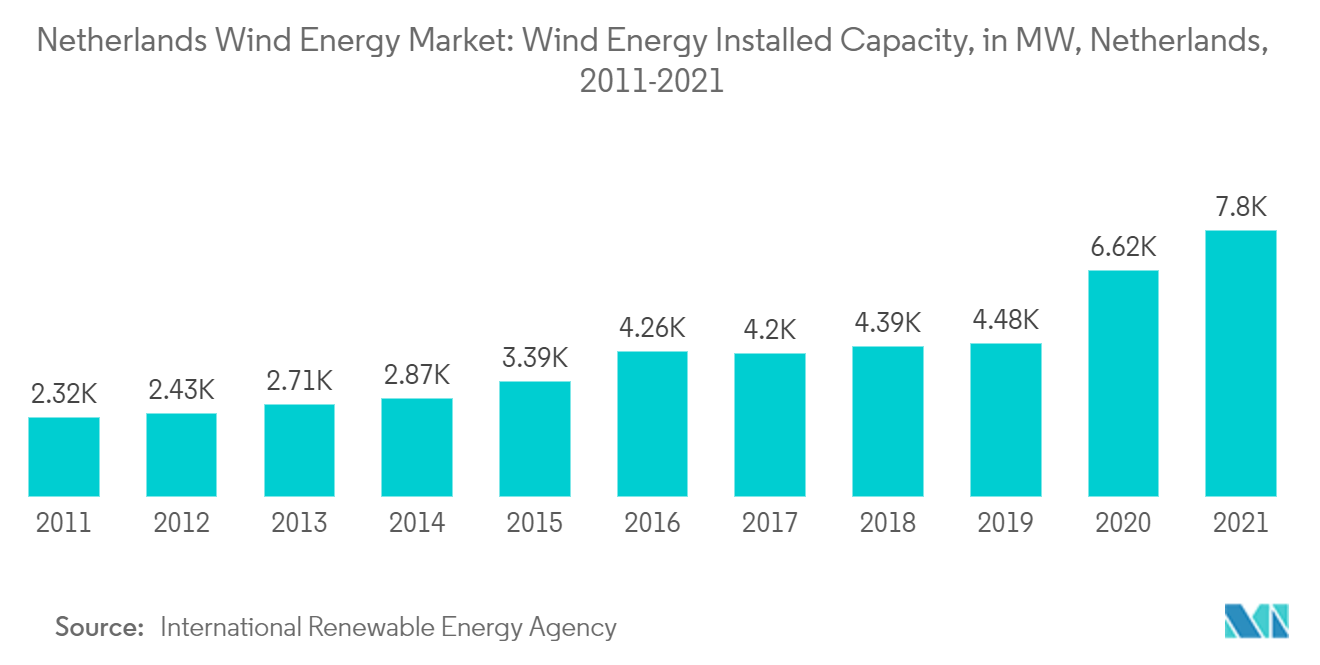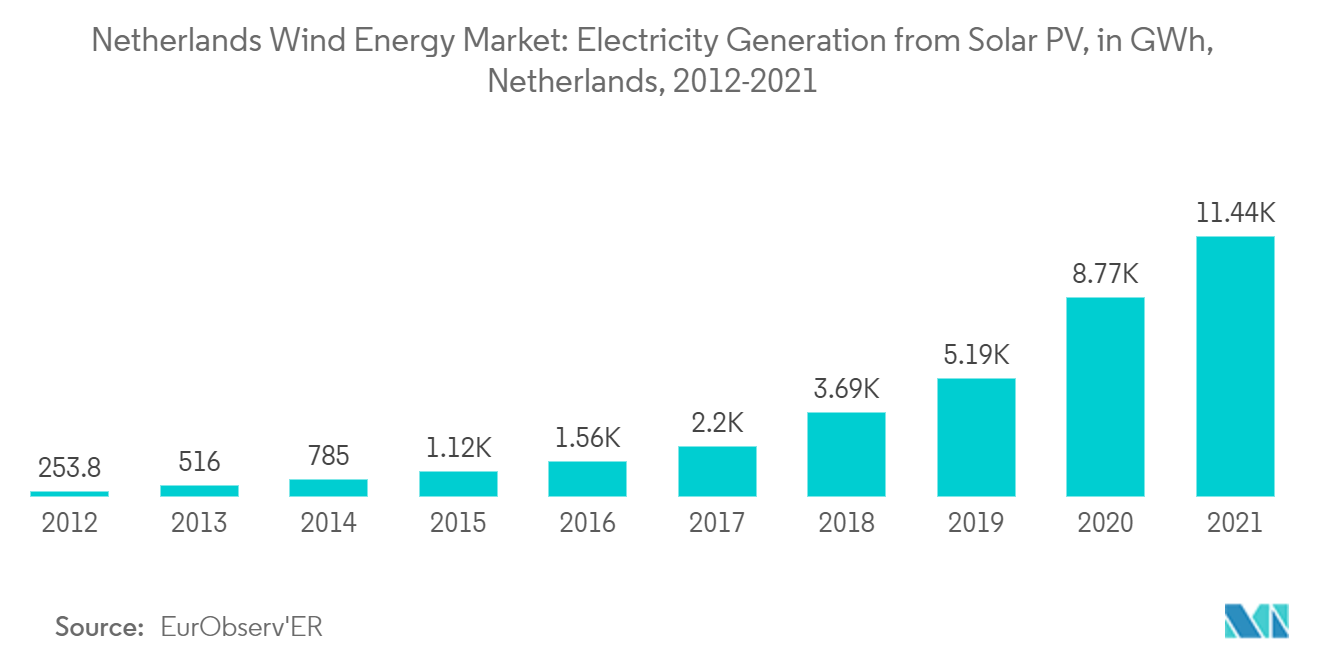Market Trends of Netherlands Wind Energy Industry
This section covers the major market trends shaping the Netherlands Wind Energy Market according to our research experts:
Offshore Wind Energy is Expected to Witness Significant Growth
- In the Netherlands, wind energy is a key renewable energy source that the country depends on to achieve a clean energy goal. The Netherlands is making strides toward the country's renewable energy targets, i.e., 16% renewable energy sources (RES) by 2023 of total energy demand.
- The conditions for offshore wind energy in the Netherlands are excellent. The factors like relatively shallow waters, good wind resources, good harbor facilities, experienced industry, and a robust support system drive the offshore wind energy market.
- The active offshore wind farms in the North Sea are Gemini (600 MW), Luchterduinen (129 MW), Prinses Amalia (120 MW), and Egmond aan Zee (OWEZ) (108 MW).
- Offshore wind farms under construction are built at several locations in the Dutch part of the North Sea, and they are Hollandse Kust (Zuid) Wind Farm Zone Sites I and II and Hollandse Kust (Zuid) Wind Farm Zone Sites III and IV.
- The Netherlands holds 7,801 MW of wind energy installed in 2021, and the wind-generated electricity in the Netherlands accounted for 15.34 TWh in 2020. As energy demand rises, the Netherlands is adopting renewable energy as a sustainable and clean form of energy. Adopting offshore wind energy, along with higher wind potential and energy demand, attracts companies to increase investment.
- In September 2022, Dutch officials established a target of 70 GW of offshore wind power by 2050 to achieve increased sustainability and increase hydrogen production. Approximately 50 GW of wind power is expected to be generated in the Netherlands by 2040. The cabinet is already working towards delivering 21 GW by 2030, about 75% of the current electricity consumption in the country.
- By location of deployment, offshore wind energy is expected to have significant growth in the market during the forecast period, owing to declining cost and undergoing upcoming offshore wind farm projects.

Increasing Deployment of Solar Energy is likely to Hinder the Growth of the Market
- The Netherlands has a long tradition of using sustainable energy and is a leading innovator. Solar energy is fast gaining ground in the Netherlands.
- At the end of 2021, solar PV-based electricity generation reached 11.43 TWh from 8.76 TWh in 2020, with a growth rate of 30.4% using the country's abundant solar resources and newer technology.
- The major driving factor in the Netherlands solar PV market has been the innovation of new techniques, such as floating PV with bi-facial crystalline Silicon and layered solar systems, resulting in more efficiency.
- The Netherlands' solar PV covers the national energy demand with an installed capacity of 13.99 GW in 2021. Hence, solar energy installation ought to increase during the forecast period and is likely to hinder the market studied.
- New upcoming trends, such as smart city initiatives, are expected to play a crucial role in fueling solar PV installations in the country. For instance, Rotterdam, Netherlands, plans to accelerate its RUGGEDISED smart city project, funded by the European Union's Horizon 2020 program. The project follows a pioneering approach to improving citizens' quality of life while minimizing the environmental impact. A significant part is focused on powering residential, commercial, and public infrastructures with new solar capacity.
- In September 2022, with Tomorrow Energy, Q Energy formed a partnership to co-develop 300 MW of photovoltaic projects in the Netherlands, marking the company's entry into the Dutch renewable energy market. As a result of this agreement, the two companies will jointly develop 21 solar systems ranging in capacity from 4 megawatts to 40 megawatts, which will be constructed and installed over the next three years.
- In November 2022, Dutch-Norwegian company SolarDuck and its consortium partners received a subsidy of USD 7.54 million from the Netherlands Enterprise Agency (RVO) for developing, testing, and validating its Merganser floating solar energy platform.
- Such developments in solar PV installations in the county and the increasing adoption of alternate clean power sources such as solar energy is likely to hinder the growth of the wind energy market in the coming years.


